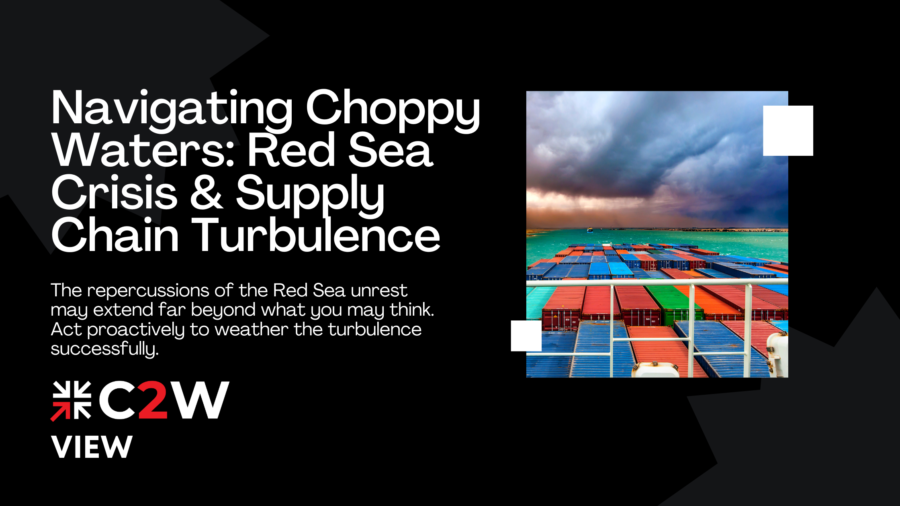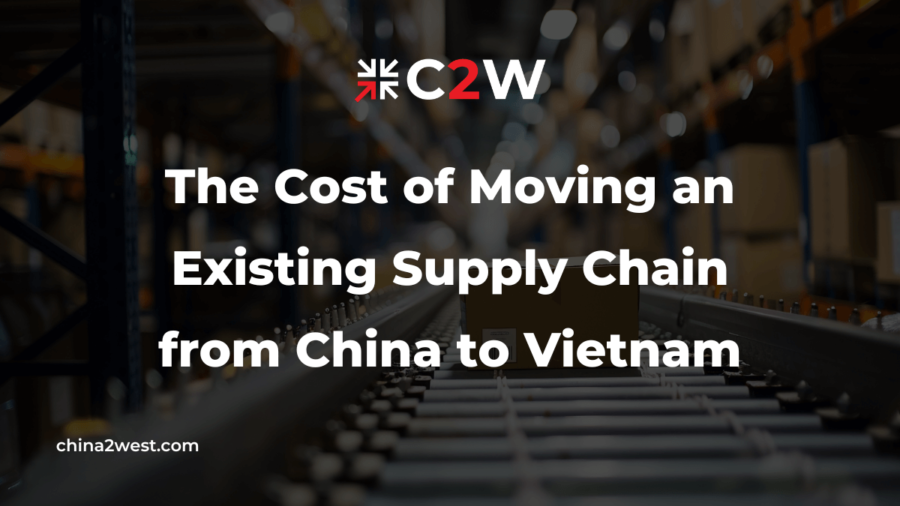In the dynamic realm of international trade, the recent surge in attacks on vessels in the Red Sea has ignited a maelstrom, challenging the resilience of global supply chains.
The Suez Canal, a linchpin of maritime transport, accounting for a staggering 12% of global trade and facilitating the passage of over a billion barrels of oil daily, now faces an unsettling climate of uncertainty.
The implications of this crisis extend far beyond the narrow waters of the Red Sea, reaching regions intricately connected to the Suez Canal’s strategic importance.
Why Is It Important?
Countries heavily reliant on this vital waterway, including those in Europe, the Middle East, and Asia, now find themselves grappling with the consequences of disrupted trade routes.
As the epicenter of this crisis, the Suez Canal’s blockade due to Houthi rebel attacks on vessels navigating the Bab al-Mandab strait has triggered an unprecedented rerouting of major shipping companies.
Giants like Maersk, Evergreen, and Hapag-Lloyd have been compelled to pause operations through the Red Sea, opting to navigate their vessels around Africa’s Cape of Good Hope, bypassing the Suez Canal entirely.
This strategic shift introduces an element of uncertainty and volatility into the smooth flow of global commerce, particularly for industries accustomed to the swift currents of international trade.
How Can It Detrimentally Impact the Global Supply Chain?
The reverberations of these disruptions extend across sectors, with manufacturing, retail, and automotive industries facing the dual challenge of adapting to unforeseen delays and grappling with escalated costs.
Consumer goods, the lifeblood of modern economies, now stand at the precipice of potential shortages and disruptions in reaching markets worldwide.
From electronics to clothing, the Red Sea crisis casts a shadow over the seamless movement of goods that consumers have come to expect. Delays in the supply chain, a direct consequence of vessels diverting from the Suez Canal, are already starting to manifest, with shipping rates witnessing a notable 4% surge in the past week alone.
As major players in the shipping industry alter their courses, businesses must brace themselves for the domino effect, navigating through a landscape where even the most intricate supply chain strategies are tested.
This disruption not only poses operational challenges for businesses but also injects an additional layer of complexity into the economic maneuvering orchestrated by central banks.
The Federal Reserve, in its ongoing efforts to combat inflation while orchestrating a delicate economic soft landing, now faces an unexpected headwind.
The disruption in the global supply chain, driven by the Red Sea crisis, threatens to complicate the carefully balanced equation the central bank strives to maintain.
The intricate dance of interest rates, inflation targets, and economic stability becomes even more challenging against the backdrop of geopolitical uncertainties that can send shockwaves through the global economy.
Any alternatives?
Amid these challenges, major shipping companies are resorting to alternative routes, such as circumnavigating Africa’s Cape of Good Hope.
While providing an escape from the immediate threat posed by the Red Sea crisis, this alternative comes at a significant cost.
Maersk’s CEO, Vincent Clerk, highlighted that depending on the specific route, sending ships around southern Africa could add “anywhere between two and four weeks of delays.”
The prospect of increased shipping times translates into a potential backlog in the supply chain, with far-reaching consequences for businesses across sectors. As costs escalate, industries that rely on the timely movement of goods now face a critical juncture where strategic decisions need to be made to weather the storm.
What Can Businesses Do to Weather This Turbulence?
In response to these challenges, businesses must adopt a proactive stance to fortify their supply chains against the turbulence unleashed by the Red Sea crisis.
Proactive tracking of shipments, relentless communication with suppliers to ensure supply resilience, and astute consideration of broader impacts, such as potential inflation and geopolitical tensions, emerge as imperatives.
As businesses navigate these uncharted waters, resilience, adaptability, and strategic planning become the guiding stars in the intricate dance of global supply chains.
In this era of geopolitical uncertainties, enterprises across sectors find themselves at the forefront of a transformative period, where the ability to anticipate, adapt, and innovate will define success in the face of unprecedented disruptions.
The strategic imperative for businesses navigating these uncharted waters involves proactive measures to fortify supply chains. Beyond tracking shipments and ensuring constant communication with suppliers, enterprises must engage in scenario planning.
The ability to foresee potential disruptions, whether in the form of inflationary pressures or extended shipping times, becomes a strategic advantage.
Collaboration across the supply chain ecosystem, from manufacturers to logistics partners, emerges as a linchpin for resilience. In an era where uncertainty is the only constant, businesses must embrace agility and innovation as core tenets of supply chain management.
The Red Sea crisis unfolds as a defining moment for global supply chains, underscoring their vulnerability to geopolitical events. The interconnected nature of the global economy magnifies the impact, necessitating adaptive strategies and proactive measures. As businesses navigate the choppy waters ahead, the lessons learned from previous disruptions — be it the Ukraine-Russia War or the pandemic — become invaluable. The ability to anticipate, adapt, and innovate emerges as the cornerstone of success in an era where supply chain resilience defines the trajectory of businesses across industries.




